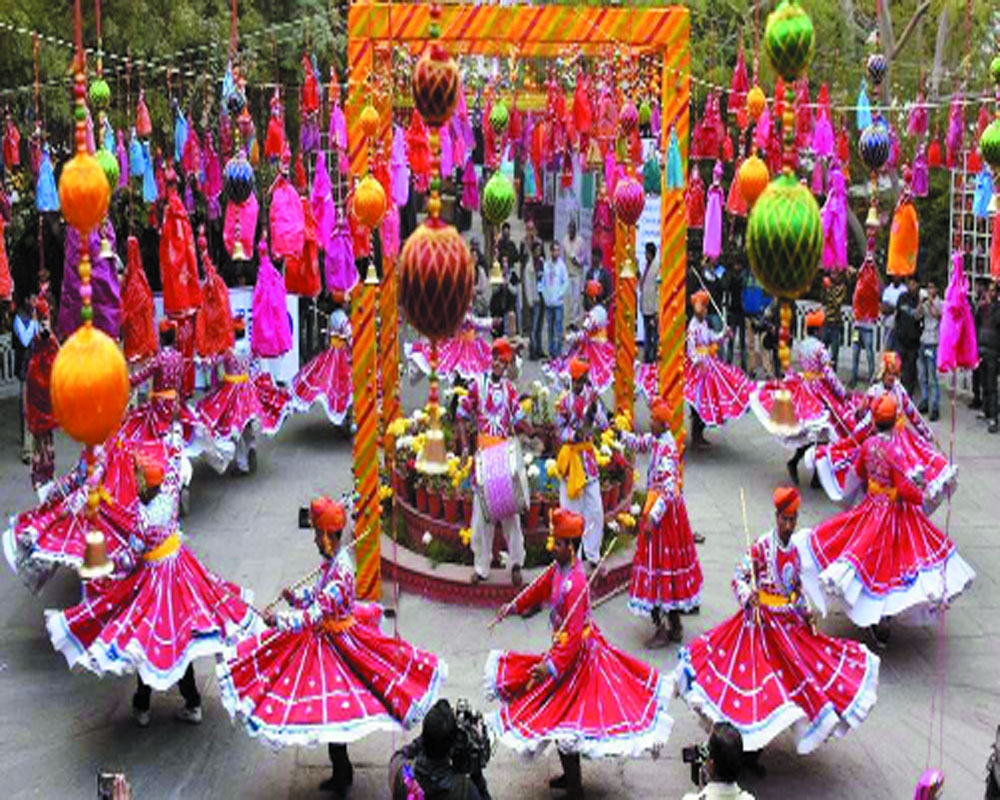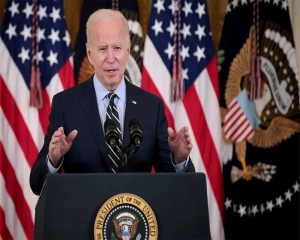Sanjoy Roy has helmed many pathbreaking festivals but it is the Jaipur Literary Festival, which celebrates dissent and India, where he has left his impeccable mark, says Saimi Sattar
There are more than a hundred people — the swish set of Delhi kitted out in their best to safeguard against the vagaries of nature while answering suitably to the demands of fashion, tinkling their glasses while talking about books, literature and more. But in the sea of humanity, one person is hard to miss. He greets everyone with equal warmth, asks appropriate and specific questions of each person and tells them to help themselves to the hors d’oevre that are circulating on the garden terrace of a hotel in central Delhi. And it seems that it is around the shock of grey white hair sported by founder and director of Teamwork Arts Sanjoy K Roy, that most of the action circumambulates at the curtain raiser of the Jaipur Litfest. Roy along with co-directors, noted historian William Dalrymple and writer Namita Gokhale, are the most prominent faces of the Jaipur Literary Festival which will be held between January 24 and 28 next year.
This year’s constellation of speakers includes Colson Whitehead, author of nine books of fiction and non-fiction, including the Pulitzer Prize winning The Underground Railroad, Markus Zusak, the international bestselling author of The Book Thief, which was on New York Times bestseller list for a decade and has been translated into more than 40 languages, Andrew Sean Greer, bestselling author of six works of fiction, including the 2018 Pulitzer Prize winning novel Less among others.
So when one asks Roy how does he manage to have such a wide variety of names each year, pat comes the reply, “People want to come to us. That’s the big news. The way we look after people is one reason. It is not just an experience but also because it is an important place to be for books.” And with the business of books having practically exploded over the years, JLF is certainly a place to go to. “Ten years ago, a bestseller was 3,000 hardback copies maximum. Today you are talking of 30,000. We sell about a 1,00,000 from the bookstore over five days which is the number that five bookstores sell in a month in a main city,” he adds.
The mammoth size of the festival, which has been the subject of study at the Harvard Business School, “was an accident” says Roy. They never started out to become the largest festival of its kind. “The five pillars that we stand on include that today India across the world is seen as a place that one should get to know. But it is seen as way too confusing. Maybe the festival gives the audience a sense of what India is. It is a window to another world and another philosophy,” says Roy.
The setting of Jaipur with its old world charm and forts further adds to the pull of the place along with the Indian hospitality. “It is like the great big Indian wedding of the literature festival. Everyone goes away as an ambassador after attending it,” says Roy. Besides the hospitality, heritage, great programming, what made the number of visitors swell from 5,000-6,000 in the initial year to about half a million last year, is the fact that, “We are able to bring the world to India and take India to the world. All of that has combined to create the pillars on which the festival sits on. We are not precious about reserving seats as it is first come, first serve irrespective of whether it is a Chief Minister or a Minister. The fact that it is open access and there are no reservations also makes it special. Often some celebrated people told me that they did not get seats while all the kids were sitting there. I believe that the festival is for younger people, which is evident from the fact that 61 per cent of visitors are below the age of 25. When writers look at this, it is an awakening for them because everywhere else it is a sea of this,” he says pointing to his grey hair. He also says that some of the best questions and the most intelligent ones at the sessions are asked by younger people.
Roy feels that it’s the audience that lends JLF its incredible vibe. “The joint energy and its effusion that you feel at JLF is something similar that that you feel during a Kumbh Mela or when you go for a pilgrimage. It is what makes the festival what it really is,” says Roy whose Teamwork Arts has several other successful cultural festival including Ishaara Puppet Theatre, Mahindra Kabira Festival, The Sacred Pushkar and many other national and international ones under its ever-expanding belt.
The JLF is certainly the biggest of their brands and Roy has actively worked to ensure that its philosophy has remained unchanged. “We try and ensure that the speaker is presented with a platform where he or she doesn’t have to say what he or she has already said on 500 other platforms. Moreover, when they see the vast sea of humanity, they step up to the vast table and conversations change,” says Roy.
JLF is also known to openly accept dissent. “We don’t accept it, we openly celebrate it,” asserts Roy and by way of example says, “The left, right, centre, far left, far right — everyone can take centrestage. Of course that means we do get bashed by all sides but that is our job, for I believe that we need to give as many platforms to people as possible to give them a perspective so that they can make up their own mind.”
And his vision is in a way being realised as since the inception of the JLF, many more festivals have sprouted on the same lines. Roy says, “We support many of the festivals that happen around us. We share the authors and we believe that there can be more platforms in the sub continent. Our only advice is that they should find their USP. Every festival can contribute to its local economy to the publishing, music, theatre and more because there is an economics around it,” he says.
He believes that the idea of JLF is that one can come here and discover the world, listen to incredible ideas and go away feeling amazed with it all. “You can disagree, you can have dissent, you can do whatever but if you go away with five, 15, 50 or 500 different viewpoints, that is what make the festival great,” he says.
However, many of its dissenters say that over the years the JLF has descended into a massive jamboree which has to do with everything but books. Roy counters, “You can come for whatever reason that drives you. You can come to take a selfie, eat whatever food that we offer. Of course, we could have held it an India International Centre or India Habitat Centre or their equivalent but this is about celebrating our built heritage and culture and the legacy of writing which we had forgotten for a long time.”
JLF has also travelled to a number of places outside the country and while each destination has contributed to its growth, each location has also made it specific to that place. “In London, it is programmed for London. In Boulder, it is very specific to America so you will have Latino, African, Caribbean and Native Americans and issues that are local. We have a local, national and international perspective which is what makes it different. This helps us to discover amazing writers that otherwise we would have had no access to,” he says with a satisfied smile.


























